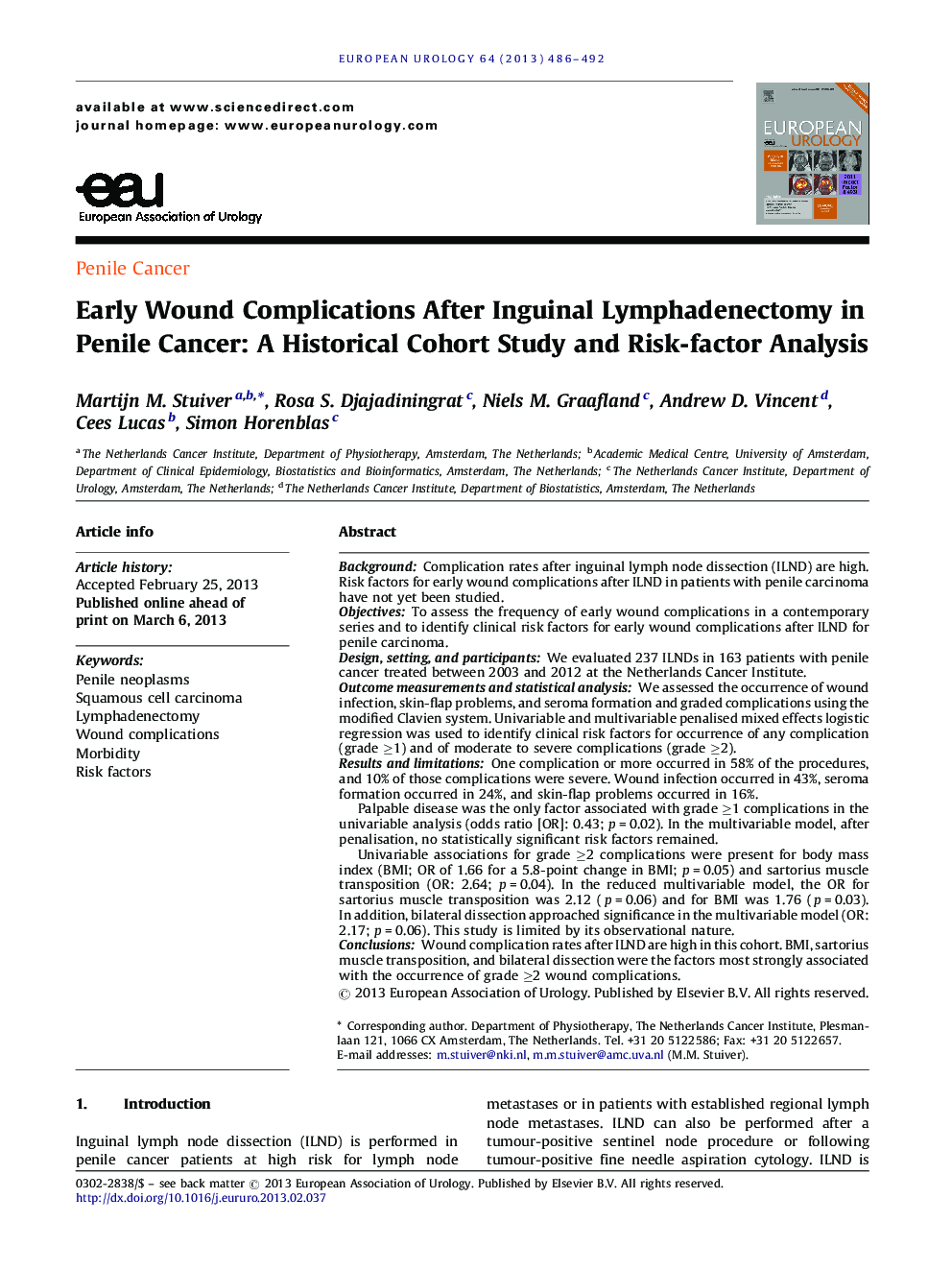| کد مقاله | کد نشریه | سال انتشار | مقاله انگلیسی | نسخه تمام متن |
|---|---|---|---|---|
| 3925759 | 1253134 | 2013 | 7 صفحه PDF | دانلود رایگان |

BackgroundComplication rates after inguinal lymph node dissection (ILND) are high. Risk factors for early wound complications after ILND in patients with penile carcinoma have not yet been studied.ObjectivesTo assess the frequency of early wound complications in a contemporary series and to identify clinical risk factors for early wound complications after ILND for penile carcinoma.Design, setting, and participantsWe evaluated 237 ILNDs in 163 patients with penile cancer treated between 2003 and 2012 at the Netherlands Cancer Institute.Outcome measurements and statistical analysisWe assessed the occurrence of wound infection, skin-flap problems, and seroma formation and graded complications using the modified Clavien system. Univariable and multivariable penalised mixed effects logistic regression was used to identify clinical risk factors for occurrence of any complication (grade ≥1) and of moderate to severe complications (grade ≥2).Results and limitationsOne complication or more occurred in 58% of the procedures, and 10% of those complications were severe. Wound infection occurred in 43%, seroma formation occurred in 24%, and skin-flap problems occurred in 16%.Palpable disease was the only factor associated with grade ≥1 complications in the univariable analysis (odds ratio [OR]: 0.43; p = 0.02). In the multivariable model, after penalisation, no statistically significant risk factors remained.Univariable associations for grade ≥2 complications were present for body mass index (BMI; OR of 1.66 for a 5.8-point change in BMI; p = 0.05) and sartorius muscle transposition (OR: 2.64; p = 0.04). In the reduced multivariable model, the OR for sartorius muscle transposition was 2.12 (p = 0.06) and for BMI was 1.76 (p = 0.03). In addition, bilateral dissection approached significance in the multivariable model (OR: 2.17; p = 0.06). This study is limited by its observational nature.ConclusionsWound complication rates after ILND are high in this cohort. BMI, sartorius muscle transposition, and bilateral dissection were the factors most strongly associated with the occurrence of grade ≥2 wound complications.
Journal: European Urology - Volume 64, Issue 3, September 2013, Pages 486–492